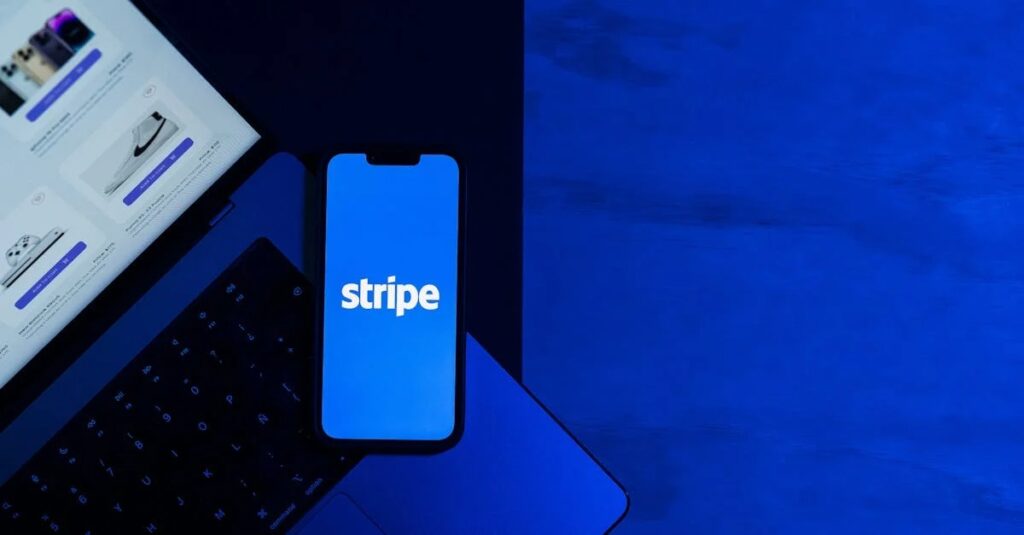In today’s digital age, entry-level web design jobs are more accessible than ever. Aspiring designers are finding numerous opportunities to kickstart their careers in a field that’s constantly evolving. With businesses increasingly relying on online presence, the demand for fresh talent is skyrocketing.
These roles not only offer a chance to showcase creativity but also provide valuable hands-on experience. From crafting visually appealing websites to understanding user experience principles, entry-level positions lay the foundation for a successful career in web design. For those ready to dive in, the journey is filled with potential and excitement.
Entry Level Web Design Jobs
Entry-level web design jobs offer opportunities for individuals to start their careers in the digital realm. These positions typically require a foundational knowledge of design principles, user experience, and basic coding languages such as HTML and CSS. Designers in these roles often assist senior team members in creating visually appealing and functional websites.
Companies now seek candidates who possess a blend of technical skills and creativity. Entry-level web designers frequently engage in tasks such as:
- Design Creation: Developing layout designs that align with brand guidelines.
- Content Management: Updating website content and ensuring it remains relevant.
- User Testing: Collecting user feedback to improve website usability and functionality.
- Collaboration: Working alongside developers, marketers, and other designers to deliver cohesive projects.
The job market for entry-level web design positions continues to grow due to the increasing digitalization of businesses. Factors driving this demand include an emphasis on online branding and e-commerce. Moreover, many organizations value candidates with a portfolio showcasing their design work, even if it stems from academic projects or personal initiatives.
Flexibility in work arrangements is another appealing aspect of these positions. Many entry-level jobs offer remote options, allowing designers to work from various locations. Overall, entry-level web design jobs represent a solid starting point for budding designers aiming to establish their career in a dynamic field.
Skills Required for Entry Level Web Design
Entry-level web design positions demand a blend of technical and soft skills. Candidates with proficiency in these areas increase their appeal to potential employers and enhance their effectiveness in the role.
Technical Skills
- HTML: Understanding of Hypertext Markup Language (HTML) provides the foundation for creating structured web pages. Knowledge of semantic HTML ensures better accessibility and SEO practices.
- CSS: Cascading Style Sheets (CSS) knowledge is crucial for styling web pages. Proficiency in CSS enables designers to customize layouts, colors, and fonts effectively.
- JavaScript: Familiarity with basic JavaScript concepts allows for interactive web elements. This skill enhances user experience through dynamic content.
- Responsive Design: Knowledge of responsive design principles ensures websites function well on various devices. Understanding frameworks like Bootstrap aids in creating adaptive layouts.
- Graphic Design Tools: Proficiency in tools such as Adobe XD, Sketch, or Figma is essential for creating prototypes and mockups. Familiarity with these tools streamlines the design process.
- Basic UX Principles: Understanding user experience (UX) fundamentals helps in designing user-centric websites. Knowledge of user testing and feedback helps in optimizing designs.
- Communication: Strong communication abilities facilitate collaboration with team members and clients. Clear explanations of design concepts are vital for ensuring alignment with project goals.
- Problem-Solving: Effective problem-solving skills allow designers to tackle design challenges creatively. Identifying user issues and developing practical solutions is key to success.
- Time Management: Good time management ensures the timely completion of projects. Balancing multiple tasks while meeting deadlines enhances overall productivity.
- Adaptability: Adaptability to new tools and technologies is essential in the evolving web design landscape. Embracing changes fosters continuous learning and growth.
- Attention to Detail: A keen eye for detail contributes to the creation of polished and functional websites. Detecting inconsistencies and errors helps maintain high-quality standards.
- Teamwork: Collaborative skills enable effective work within diverse teams. Successful collaboration leads to more innovative and well-rounded design outcomes.
Where to Find Entry Level Web Design Jobs
Finding entry-level web design jobs requires exploring several platforms and leveraging networks effectively. Various resources exist to connect candidates with job opportunities in this competitive field.
Job Boards and Websites
Numerous job boards and websites specialize in listing entry-level web design positions. Notable platforms include:
- Indeed: Offers a wide range of job listings, allowing users to filter for entry-level roles.
- LinkedIn: Provides networking while featuring job openings, enabling users to connect directly with hiring managers.
- Glassdoor: Allows job seekers to read company reviews and salary information along with job listings.
- AngelList: Focuses on startup job opportunities, often featuring remote positions ideal for entry-level designers.
- Behance: Showcases creative portfolios while allowing job searches specifically for design roles.
Commonly, candidates should optimize their profiles and customize applications to enhance visibility and appeal.
Networking Opportunities
Networking emerges as a vital strategy for securing entry-level web design jobs. Engaging in the following activities fosters connections:
- Meetups and Conferences: Attending local design meetups or industry conferences facilitates face-to-face interactions with industry professionals.
- Social Media: Joining groups on platforms like Facebook and LinkedIn enables participation in discussions and discovery of job leads.
- Online Forums: Engaging in forums like Stack Overflow allows sharing knowledge and connecting with potential employers.
- University Alumni Networks: Leveraging alumni connections can provide mentorship and job opportunities in the web design field.
Building relationships within the web design community often leads to job referrals and inside knowledge about available positions.
Crafting an Impressive Portfolio
A strong portfolio showcases a designer’s skills and creativity, serving as a crucial tool for securing entry-level web design jobs. It should reflect the designer’s unique style and practical ability, emphasizing the value they bring to potential employers.
Essential Elements of a Portfolio
- Diverse Examples: Include a range of work, such as websites, graphics, and UI components. This diversity highlights versatility and competence in different aspects of design.
- Project Descriptions: Provide clear, concise details about each project. Include objectives, design choices, and technologies used. This context demonstrates the designer’s thought process and technical knowledge.
- Achievements and Results: Present metrics or feedback where applicable. Quantifiable outcomes, like improved user engagement or increased sales, showcase the impact of the designer’s work.
- Personal Branding: Maintain a consistent visual identity across the portfolio. Use a unified color scheme, typography, and layout to reflect the designer’s personal brand and build recognition.
- Contact Information: Clearly display contact details or links to professional profiles. This accessibility facilitates connection with potential employers or clients.
- Highlight Key Projects: Choose 3-5 standout projects that best represent skills and creativity. Prioritize quality over quantity and ensure each project showcases specific design techniques.
- Use High-Quality Visuals: Upload optimized images or screen captures that emphasize design quality. Clear visuals attract attention and encourage engagement with the portfolio.
- Interactive Elements: If applicable, integrate interactive elements or live links. Demonstrating functional prototypes can impress employers and highlight technical proficiency.
- Tailored Presentation: Customize portfolio presentations for specific job applications. Focus on relevant projects that align with the organization’s style or industry needs.
- Solicit Feedback: Seek input from peers or mentors when refining the portfolio. Constructive criticism can identify strengths and areas for improvement, enhancing the overall presentation.
Tips for Acing the Job Interview
Successful interviews for entry-level web design jobs require preparation and familiarity with common expectations. Candidates who understand the landscape of web design interviews can present themselves confidently.
Common Interview Questions
Candidates should anticipate a variety of questions during web design interviews. Common questions include:
- Tell us about your design process. Candidates must explain their approach to a project, including research, ideation, and execution.
- How do you stay updated on design trends? Candidates should discuss their methods for continuous learning, such as following blogs, attending workshops, or engaging in design communities.
- What tools do you prefer for design and prototyping? Candidates must be prepared to share their proficiency in tools like Adobe XD, Figma, or Sketch.
- Can you show us your portfolio? Candidates should highlight key projects, explaining decisions made and challenges overcome.
- How do you handle constructive criticism? Candidates must demonstrate a willingness to learn and adapt based on feedback from peers or clients.
- Describe a time when you worked on a team project. Candidates should offer examples of collaboration, emphasizing communication and teamwork.
- Research the Company. Understand the company’s web design style, recent projects, and industry position.
- Review Your Portfolio. Familiarize yourself with portfolio pieces, focusing on relevant projects that align with the company’s needs.
- Practice Mock Interviews. Conduct mock interviews with friends or mentors to refine responses and presentation skills.
- Prepare Questions to Ask. Formulate insightful questions regarding the company’s design process, team dynamics, and project expectations.
- Dress Professionally. Choose attire that reflects both professionalism and the company’s culture.
- Arrive Early or Log In On Time. Punctuality demonstrates respect and commitment, whether in-person or virtual.
- Stay Calm and Confident. Approach the interview with a positive mindset, allowing for genuine expressions of interest and enthusiasm.
Demand for Fresh Talent
Entry-level web design jobs offer a unique opportunity for aspiring designers to launch their careers in a rapidly evolving digital world. With the right mix of technical and soft skills candidates can position themselves as valuable assets to potential employers.
Creating a standout portfolio and leveraging networking opportunities are essential for success in this competitive landscape. As businesses increasingly prioritize their online presence the demand for fresh talent continues to grow.
By embracing the challenges and opportunities that come with these roles individuals can pave the way for a rewarding career in web design. The journey may be just beginning but the potential for growth and creativity is limitless.



